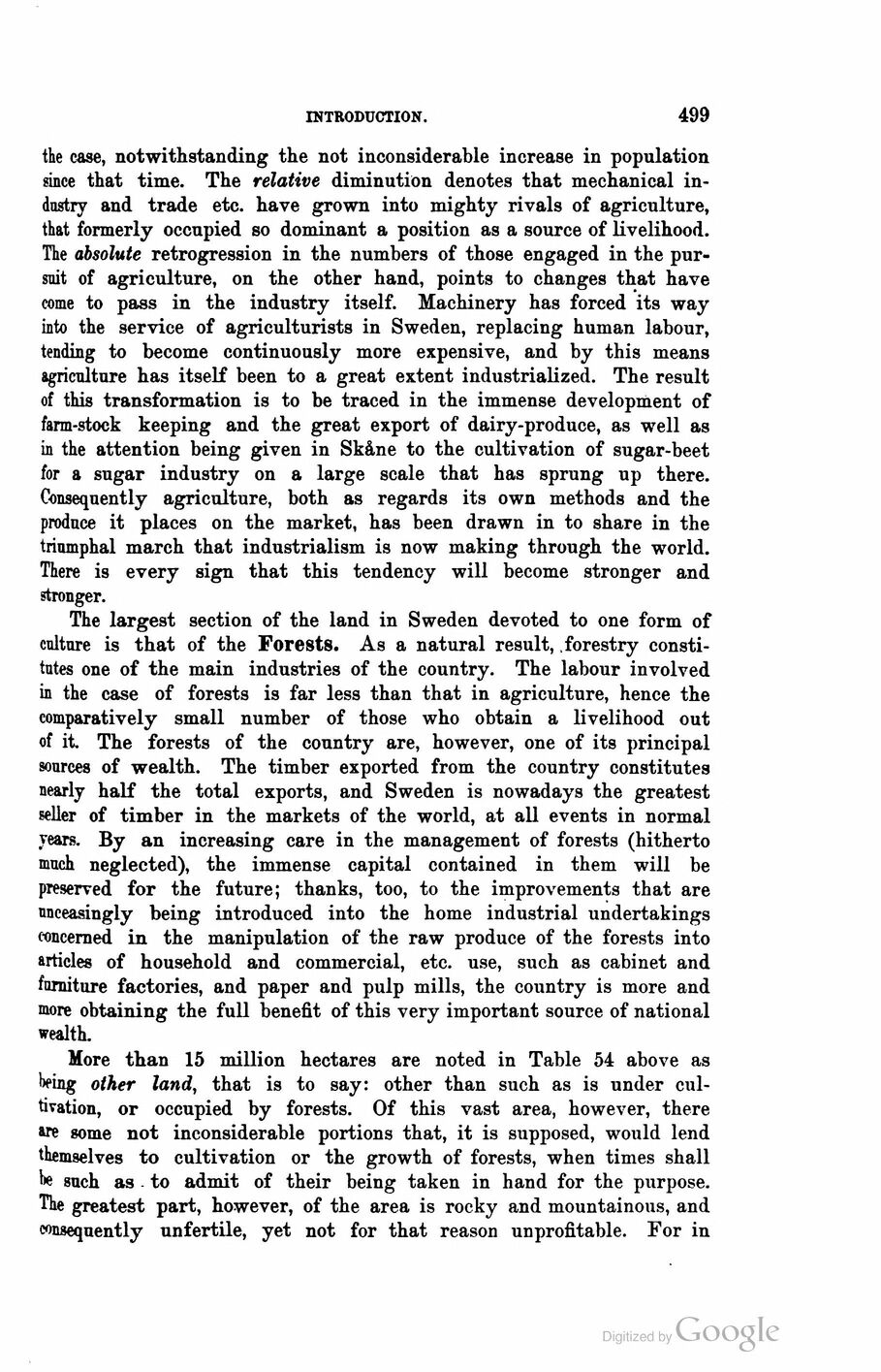
Full resolution (JPEG) - On this page / på denna sida - Second part - V. Occupations and Industries. A general Survey. By Prof. P. Fahlbeck, Ph. D., Lund, Member of the Riksdag

<< prev. page << föreg. sida << >> nästa sida >> next page >>
Below is the raw OCR text
from the above scanned image.
Do you see an error? Proofread the page now!
Här nedan syns maskintolkade texten från faksimilbilden ovan.
Ser du något fel? Korrekturläs sidan nu!
This page has never been proofread. / Denna sida har aldrig korrekturlästs.
INTRODUCTION.
499
the case, notwithstanding the not inconsiderable increase in population
since that time. The relative diminution denotes that mechanical
industry and trade etc. have grown into mighty rivals of agriculture,
that formerly occupied so dominant a position as a source of livelihood.
The absolute retrogression in the numbers of those engaged in the
pursuit of agriculture, on the other hand, points to changes that have
come to pass in the industry itself. Machinery has forced its way
into the service of agriculturists in Sweden, replacing human labour,
tending to become continuously more expensive, and by this means
agriculture has itself been to a great extent industrialized. The result
of this transformation is to be traced in the immense development of
farm-stock keeping and the great export of dairy-produce, as well as
in the attention being given in Skåne to the cultivation of sugar-beet
for a sugar industry on a large scale that has sprung up there.
Consequently agriculture, both as regards its own methods and the
produce it places on the market, has been drawn in to share in the
triumphal march that industrialism is now making through the world.
There is every sign that this tendency will become stronger and
stronger.
The largest section of the land in Sweden devoted to one form of
culture is that of the Forests. As a natural result, forestry
constitutes one of the main industries of the country. The labour involved
in the case of forests is far less than that in agriculture, hence the
comparatively small number of those who obtain a livelihood out
of it The forests of the country are, however, one of its principal
sources of wealth. The timber exported from the country constitutes
nearly half the total exports, and Sweden is nowadays the greatest
seller of timber in the markets of the world, at all events in normal
years. By an increasing care in the management of forests (hitherto
much neglected), the immense capital contained in them will be
preserved for the future; thanks, too, to the improvements that are
nnceasingly being introduced into the home industrial undertakings
concerned in the manipulation of the raw produce of the forests into
articles of household and commercial, etc. use, such as cabinet and
furniture factories, and paper and pulp mills, the country is more and
more obtaining the full benefit of this very important source of national
wealth.
More than 15 million hectares are noted in Table 54 above as
being other land, that is to say: other than such as is under
cultivation, or occupied by forests. Of this vast area, however, there
are gome not inconsiderable portions that, it is supposed, would lend
themselves to cultivation or the growth of forests, when times shall
te such as . to admit of their being taken in hand for the purpose.
The greatest part, however, of the area is rocky and mountainous, and
consequently unfertile, yet not for that reason unprofitable. For in
<< prev. page << föreg. sida << >> nästa sida >> next page >>